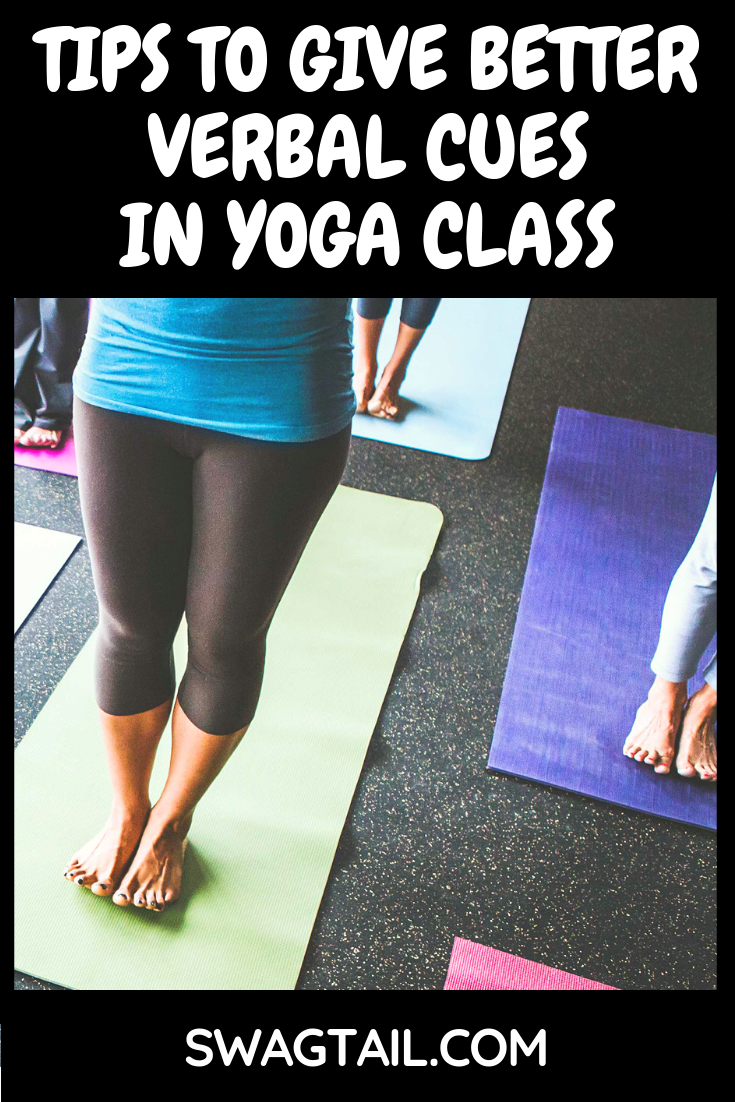 As a new yoga teacher, it can be challenging to transform the knowledge inside of your head into smart, succinct verbal cues in yoga class. Instead of overwhelming your students with too much information, keep things simple. This post highlights easy ways to lead your students through a safe, balanced practice. The best part is you’ll feel more confident and clear along the way.
As a new yoga teacher, it can be challenging to transform the knowledge inside of your head into smart, succinct verbal cues in yoga class. Instead of overwhelming your students with too much information, keep things simple. This post highlights easy ways to lead your students through a safe, balanced practice. The best part is you’ll feel more confident and clear along the way.
A few years back, I was taking a class that contained about 100 students. The teacher was well-known and always drew a large crowd. As a side note here, I tend to feel a bit claustrophobic in those settings, so I always get there early and place my mat by the wall.
Halfway through the practice, the teacher had the entire room facing my direction during the flow sequence. She was right in front of me, cueing the group into variations of warrior 2 and reverse warrior.
Then, she began cueing us into different postures (having skipped a few we had just performed on the first side). I softly called her name and moved myself into the posture that would have been next in her sequence to balance us out. She went, “Oops! [and laughed lightheartedly] Oh yeah! Okay everyone, let’s get into ….” I can’t even remember what that next asana was, but the impact was profound! Even the most seasoned teachers make mistakes in their cueing.
Instead of aiming for perfection, be your unique self as you guide students in class. The freedom and forgiveness you give yourself along the way will make the ongoing learning process much easier for all involved!
Photo Credit: Ryan J Lane
KEY POINTS TO BETTER VERBAL CUES
The main points to effective verbal cues in yoga are not much different than those used in any form of clear communication. Here are some key points to remember:
USE NATURAL VOICE
Your voice can have a significant impact on how others view you. Introducing yourself to new students at the beginning of class can be a powerful way to make a positive first impression. But what if the voice you use to say hello to your students as they walk in the door is entirely different than the one you use to then lead the entire class? This would likely create a disconnect in the minds of your students. To keep a sense of congruence and trust in your classes, use your natural speaking voice as much as possible. And, if the room is large and the class if full, consider using amplification (such as a mic) to ensure your voice will remain as normal as possible.
RELAX
When you’re tense or nervous, your throat tightens. This in turn causes your vocal cords to get rigid, and it restricts the air coming up and out of your mouth. The result is that your voice sounds thin. It could also sound raspy or constrained. In any case, it’s opposite of the rich reverberation that draws people to you.
To combat this strain, take a deep breath before speaking. You could also invite the class to start with an OM together, as this natural mmmm sound helps you find the balance point of your voice.
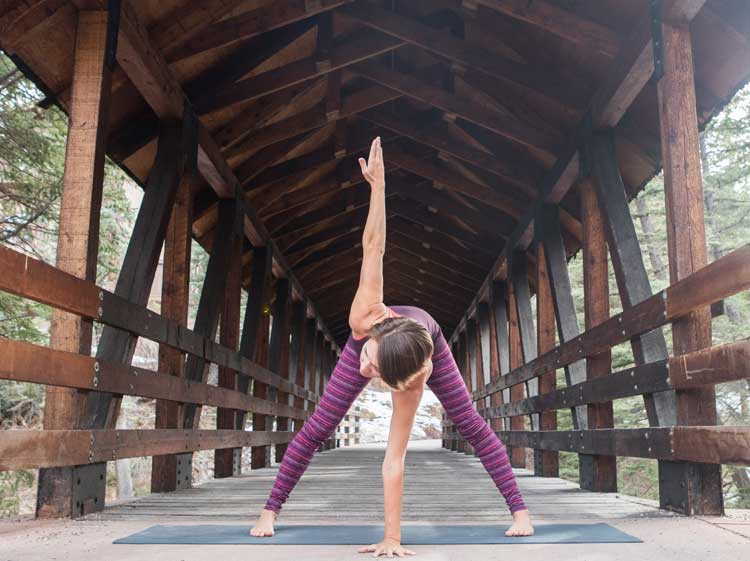
Photo Credit: White Starfish Photography
KEEP IT SIMPLE
While some teachers find it easy to be flowery with their speech, you don’t have to be that way. Nor do you have to use the anatomical terms you learned in teacher training. Most of your students don’t have that same depth of knowledge. Thus, it’s extremely important to speak in common movement terms. Just keep things simple.
Let’s say you want your students to move from mountain pose, or tadasana, into urdva hastasana. You can invite your class to “extend your arms up toward the ceiling” or simply “reach your arms up.”
These simple verbal cues in yoga become even stronger when you demonstrate the action alongside of your words. This can be especially true when you demonstrate reaching your arms up while cueing students into the posture.
LISTEN MORE
The art of listening is just as important as the skill set used to speak clearly. If you were having lunch with a friend, and you did all of the talking, you may or may not have a long-lasting friendship. The same goes for when you continue to work with your yoga students. Once you get them into poses, shut your mouth. Let them listen to their bodies, their thoughts, their emotions.
TRY AGAIN
Have you ever tried to explain a concept to another person only to get a blank stare in return? This clear sign of disconnect also happens with your students. If they don’t understand what you say the first time, try:
- Rephrasing your intention
- Using a different set of words, or
- Demonstrating what you mean if you can’t find the words.
In any case, laugh your way through it. We’ve all made mistakes, and when you keep your cool, your students will appreciate your humility.
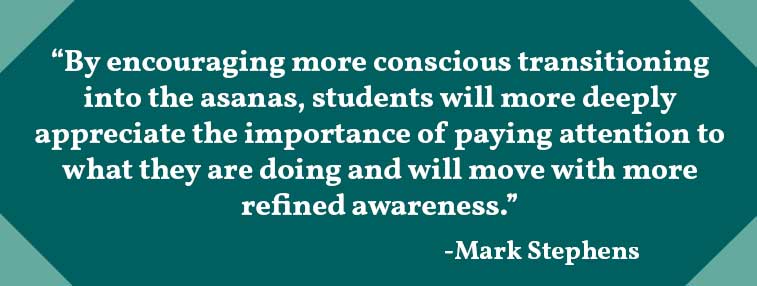
CUEING IN TRANSITIONS
Transitions in and out of yoga postures are the most common place students get injured. This is because alignment elements change from one body position to another and many people focus so much on the posture itself that they let down their guard on to the journey to, and away from, that posture. You can keep your students safe by including the following components to your verbal cues:
START WITH THE FOUNDATION
It’s essential to remember that all poses are built from the ground up. Just like erecting a skyscraper starts with detailed planning at the ground floor (or even below it for structural stability) to ensure stability and safety of the building, a yoga pose starts from the floor.
When you are planning your class sequences, ask yourself the following questions as one pose transitions into the next:
- What needs to change to create a solid base of support?
- What parts of the body are connected to the floor?
- What are the basic actions that need to happen in those body parts that form the foundation?
- Do students need to engage the feet? Spread the fingers? Press actively into the floor?
 Then, consider how the pelvis, spine, and shoulders get oriented in space in relation to the foundation.
Then, consider how the pelvis, spine, and shoulders get oriented in space in relation to the foundation.
For example, if you move your students from high crescent lunch into warrior 2, the back heel needs to spin down to the floor while the front leg remains the same. This naturally causes the pelvis to turn from a frontward-facing position to the side of the mat, but the spine still lengthens upward. The arms now extend out parallel to the floor as the shoulderblades relax down the back.
USE THE BREATH AS YOUR GUIDE
The breath can be one of your best resources when giving verbal cues in yoga. You can use each inhale or exhale to lead your students into next movement or posture. As a general rule of thumb, the:
- INHALE initiates: raise, expand, reach, lengthen
- EXHALE starts = fold, release, twist, compress
You can guide your students to move with the breath via cues such as:
- “As you inhale…”
- “With your inhalation…”
- “On your next breath out …”
Again, keep it simple. When you remind students to move on their breath, you tap into the fact that they’re in a yoga class–not a synchronized swimming performance.
UTILIZE STATIONARY LANDMARKS
Because body alignment changes during transitions, so does a student’s orientation within the studio. This change of direction can be challenging, especially for new students (and those who are directionally-challenged). To give your class a point of reference, point out stationary landmarks within the room. These will be obvious objects within the immediate view of everyone.
Some options include:
- A colored wall. (“shift your gaze toward the blue wall”)
- Windows (“turn their torso toward the windows
- Artwork or water feature (“twist your spine toward the painting”)
Keep in mind that verbal cues such as North, South, East or West are not a great way to point out directions in class. I have a family member that will walk in the opposite direction of her hotel room when exiting the elevator despite staying at the hotel for over a week. This means that even long-time locals or students might not really be able to gauge those directions (especially when all twisted up like a pretzel in your class).
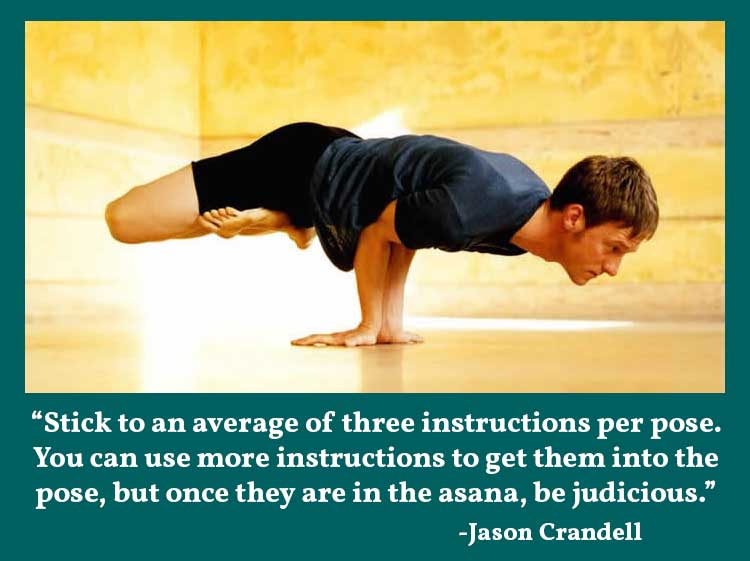
Photo Credit: Jason Crandell
CUES WHILE HOLDING POSTURES
Once you get your students where you want them to be, it’s time to refine each asana. The verbal cues you provide here allow students to deepen their experience. It’s your job to encourage this heightened awareness and self-reflection through your words. Some basic things to remember in this phase include:
START WITH THE HIGHEST RISK FIRST
As students become more stationary, you want to prevent any injury if possible. Verbalize common alignment cues for these risky areas first. For example, in Warrior 2, students tend to push their front knee past their ankle. Or, in Triangle pose, there is a tendency to hyperextend the front knee. Remind the entire class to micro-bend that front knee and engage the quadriceps to keep the kneecap lifting.
MOVE FROM BROAD AND REFINED
After the risks have been addressed, it’s time to refine even further. Start with the basic elements of the pose, or larger muscle groups. Then, as the body is stacked properly, observe the more subtle elements. This could include relaxing the eyes, softening the jaw, or even extending energy out through the fingertips.
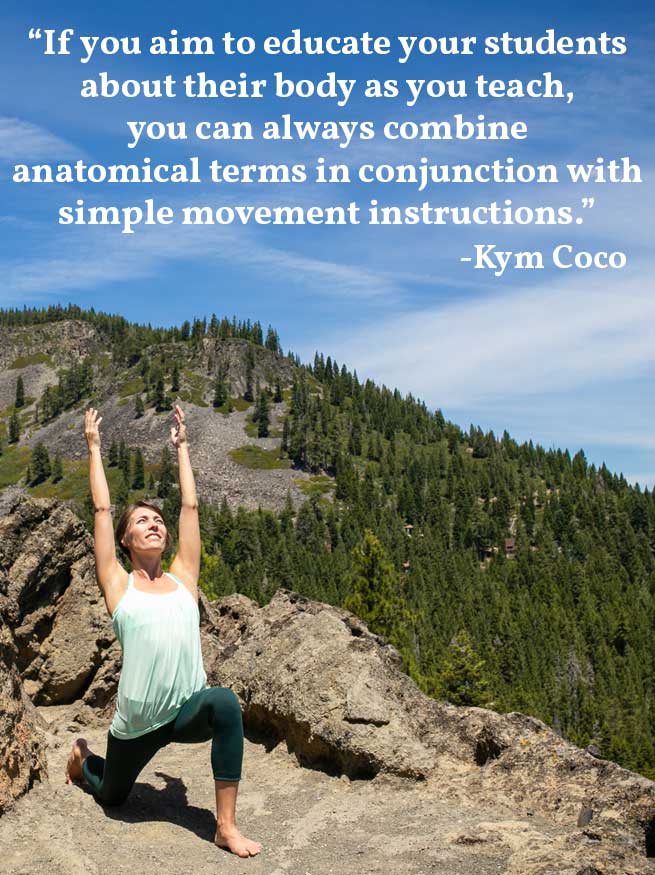 THINK STRENGTH AND FLEXIBILITY
THINK STRENGTH AND FLEXIBILITY
In any given yoga posture, there is a part of the body that is strong and supportive. A stable foundation allows other areas to lengthen or mobilize. Sometimes, you even have eccentric contractions where the muscles are both working (strong) and stretching (lengthening at the same time). Just be aware of this and pass on your insights to students so they can get the most out of each pose.
For example, let’s say you bring your class into parivrtta utkatasana (revolved chair pose). You’ve already cued your students to look down at their knees and make sure they are side-by-side to prevent knee injury. Then, you can remind them to press their feet into the floor and drop their hips down. Both of those actions are stabilizing. Then, you can invite them to lengthen their spine as they inhale (the vertebrae lengthen). The exhale can cue them to press the back of their tricep into their thigh (again, stabilizing) so that the spine can lengthen further into the twist.
REMEMBER BALANCE OF TIMING
Many new teachers, and some experienced teachers too, provide too much information when first getting into a pose. It can then feel like you’ve been in extended side angle for two minutes before it’s time to come out. Then, when they get to the second side, they shorten the verbal cues since you’ve already been in the posture. Many times this leads to a shorter hold on the second side.
The lesson: Think about the time you spend with your cues, and try to bring balance to both sides.
INFUSE MOMENTS OF SILENCE
As a general rule of thumb, it’s great to listen. In fact, this point is so important that I’m mentioning it again!! It’s true your verbal cues in yoga offer guidance. Yet, it’s the silence that allows students to internalize what you’ve said. It also gives them a chance to process that pose and highlights that moment for them.
You can remind them to breathe, but then close your lips. Let them do the work. Your job is to keep track of how long they’ve been in a pose so you can lead a balanced practice.
TIP: This is especially true during Savasana when students incorporate their entire yoga experience. Use your verbal cues to get them relaxed, but then enjoy the quiet with them.
PUTTING IT TOGETHER
You utilize your unique voice all the time when you communicate with others. Verbal cues in yoga teach you to simply refine the practice of speaking and listening. How do you get better? Practice. Practice. Practice.
When you do a yoga session at home, speak your verbal cues aloud like you’d be leading a class. If you see your canine in downward-facing down, imagine him as a student and verbalize the energetic actions of the pose out loud. Also, take as many classes as you can! This will allow you to hear various ways others use words to cue in and out of asanas.
Most importantly, have fun! Teaching yoga provides learning for you as the leader as well as the students who came to their mats!
Still have questions about verbal cues in yoga? Send us an email. Or, if you have any helpful tips that you use in class, share them with us in the comments section below!


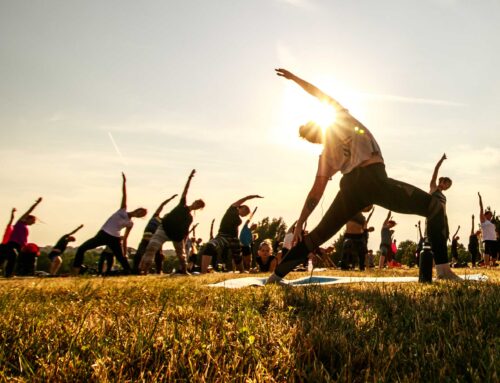

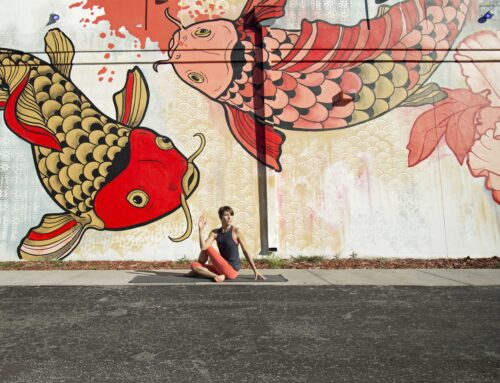

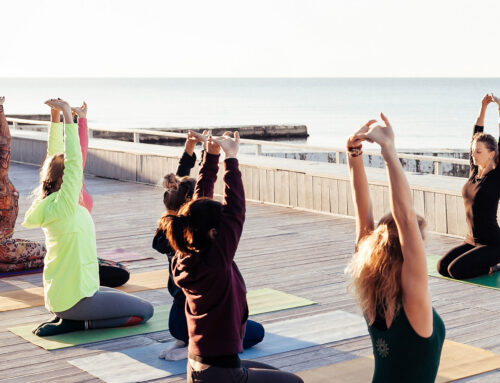

Leave A Comment